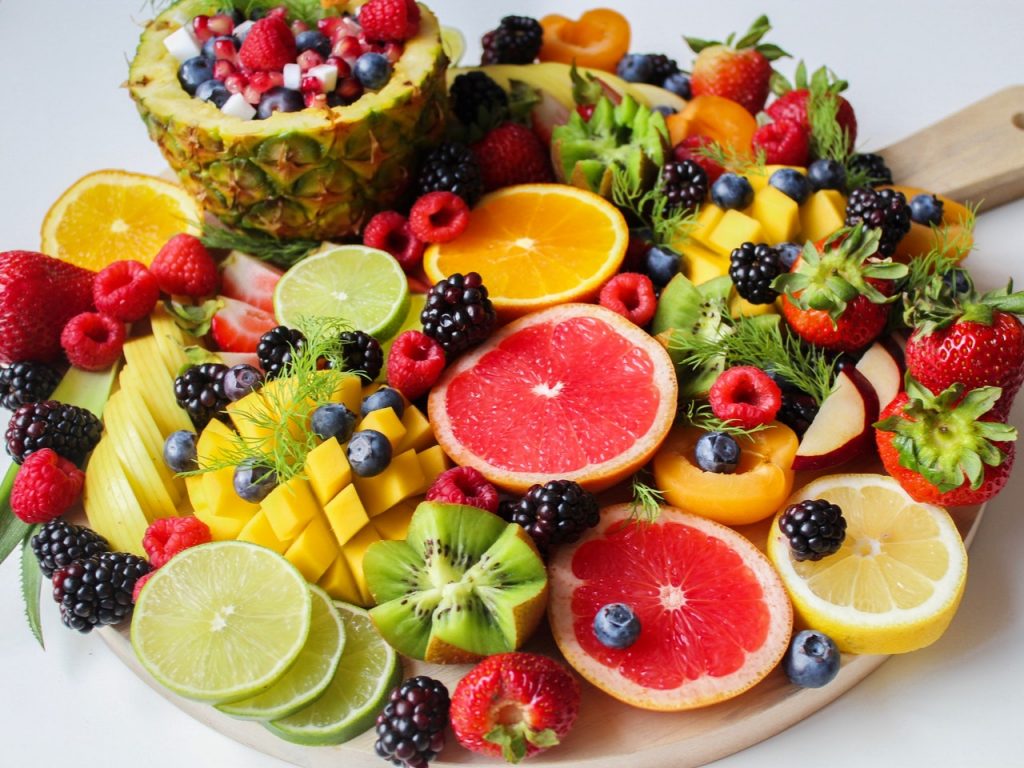Talking about the fiber content of your diet may not be the most riveting subject to bring up at the dinner table, but it might be one of the most important topics to address when evaluating your overall health. "Fiber is so important for a healthy diet," says Amy Gorin, MS, RDN, a plant-based registered dietitian. "It helps many aspects of health, from gut health to cholesterol. In addition to helping keep your body functioning optimally, eating fiber also helps keep you fuller for longer, which can be beneficial for weight management."
Unfortunately, most Americans don't get nearly enough fiber in their daily diets. According to the 2020–2025 U.S. Dietary Guidelines for Americans, women ages 31 to 50 should get 25 grams of fiber daily, and men in the same age range should aim for 31 grams per day. While most people believe they get enough fiber, more than 90 percent of women and 97 percent of men fall short of these recommendations, largely due to the overconsumption of processed foods and drinks, which have been stripped of their fiber (and much of their nutrient value).
The solution? Eating a diet rich in fruits, vegetables, legumes, and whole grains is bound to increase the amount of fiber in your diet without relying on supplements or a prescription from your doctor. An easy—and undeniably delicious—place to start is with fruit. Nature's candy happens to be filled not only with antioxidants, minerals, and other essential nutrients, but it also serves as an excellent, natural source of dietary fiber. Not all fruits are equal in terms of their fiber content, however, so it's important to know which types of fruit to reach for if you're looking to boost your fiber intake effectively, naturally, and deliciously. These are the highest-fiber fruits around.
6 High-Fiber Fruits to Eat Regularly
Berries
Raspberries and blackberries top the list with around 8 grams of fiber each per cup, but all members of the berry family are great sources of fiber (along with other antioxidants and other nutrients). It's not usually hard to find more ways to incorporate berries into your diet (nothing beats a bowl of local summer berries topped with homemade whipped cream!). But if you're looking for more berry inspo, try adding half a cup to your morning oatmeal, serving them up for dinner in a blackberry and steak salad, or blending into a smoothie with oats for a double-whammy of fiber. Just remember, if high fiber is your goal, always choose smoothies over juices, as juicing removes the fibrous content of fruits and vegetables.
Tropical Fruits
Tropical fruits are not only a fun way to mix up your daily fruit and veggie intake, they also happen to be excellent sources of fiber. Picks like passionfruit, mangos, guava, kiwis, dragon fruit, and pineapple all weigh in between 5 grams (kiwi) to 25 grams (passionfruit) per cup. Tropical fruits are fantastic options for keeping smoothies refreshing—check out this creamy pineapple-turmeric blend with a secret ingredient that may surprise you. Beyond the blender, tropical fruits make divine salsas to top meat, fish, and tacos.
Apples
The key to maximizing the fiber content of apples is to eat the skin (after a good scrubbing, of course). One medium apple with the skin on has about 4.4 grams of fiber, but if you peel it, that number drops down to 2 grams. Enjoy sliced apples as a snack with a smear of nut butter, make a chunky apple and raisin sauce to spoon over a protein, or enjoy the sweet crunch thinly sliced apples give this crisp watercress salad.
Prunes
Yes, the old adage is true: Dried plums, aka prunes, are chock-full of fiber, with around 4 grams per 3 pieces or 8 grams per cup. But it's not just the fiber that makes prunes a commonly prescribed remedy for constipation. "Prunes are a natural source of sorbitol, which helps to stimulate digestion by helping to move water into the large intestine," Gorin explains. The combination of the fiber and the sorbitol make these sweet and chewy treats effective in helping get things moving. One of the best ways to eat prunes is to heat them on the stove with a little water, honey, cinnamon, and lemon juice, and then let them plump up. After simmering for a few minutes, let cool and serve over yogurt or oatmeal. Prunes also make a delicious addition to chicken or pork dishes.
Avocados
Yes, avocados are technically fruits. These creamy, green superstars pack 7 grams of fiber for every 100 grams, which is roughly the size of half an average-sized avocado. Throw some guacamole on top of your sandwich or salad, start your day with a slice or two of avocado toast (top with an egg for solid protein), or even blend up some avocado into a creamy, dairy-free smoothie.
Pomegranate Seeds
While they might take a few minutes to wrestle out of their natural packaging, those crunchy little pomegranate seeds (called arils) boast 4 grams of fiber per 100 grams, which is about half a cup of seeds. Sprinkle pomegranate seeds on top of any salad for a sweet taste and refreshing texture, or use them to top a roast beef crostini for an unexpectedly delicious flavor combination.
